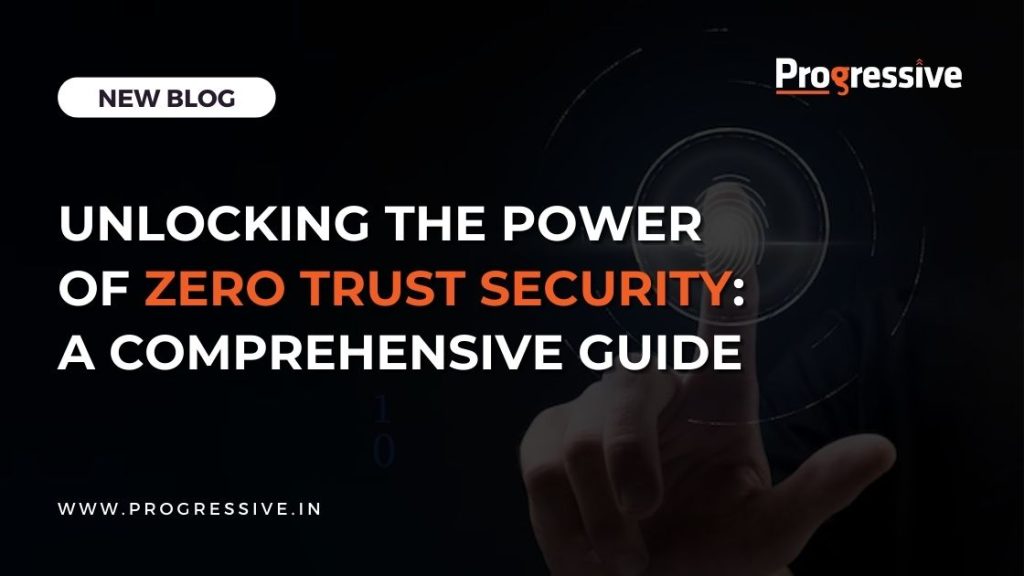
In an era dominated by sophisticated cyber threats and continuously evolving attack vectors, the inadequacies of traditional security models have become increasingly apparent. Amidst this shifting landscape, the concept of Zero Trust Security has emerged as a transformative paradigm, challenging the conventional notion of trust based on the location within or outside the network perimeter. This comprehensive blog aims to delve deep into the fundamental principles and provide practical strategies for mastering Zero Trust Security effectively.
The Essence of Zero Trust Security
Zero Trust Security operates on a foundational principle: “never trust, always verify.” It abandons the outdated assumption that threats only come from external sources, asserting that potential risks can manifest from within the network. This necessitates continuous verification and authorization for every user, device, or application, reshaping the way security is approached in the modern digital landscape.
Research 2023
- 60% of organizations will embrace zero trust as a starting point for security by 2025. Know more
- To keep pace with cybercriminals and the constantly evolving threat landscape, the organization is adopting a zero trust strategy, Fortinet reports
- On March 1, 2023, the Biden administration unveiled the National Cybersecurity Strategy, pledging to enhance federal cybersecurity. The commitment involves adopting a zero trust architecture (ZTA) strategy and modernizing both information technology (IT) and operational technology (OT) infrastructure.
Core Components of Zero Trust Security
Identity Access Management (IAM)
A robust Zero Trust Security implementation commences with a meticulous focus on Identity Access Management. This involves the careful verification and management of the identities of users, devices, and applications accessing the network. Multi-factor authentication (MFA) becomes a cornerstone in ensuring secure access, adding an extra layer of protection.
Micro-Segmentation
The adoption of Micro-Segmentation is a pivotal element in Zero Trust Security. This strategy involves breaking down the network into smaller, isolated segments, minimizing lateral movement in the event of a security breach. By compartmentalizing the network, organizations can limit the potential impact of security incidents, enhancing overall network resilience.
Least Privilege Access
The principle of least privilege is a guiding philosophy in Zero Trust Security. By ensuring that users and systems have only the minimum level of access required to perform their tasks, the attack surface is significantly reduced. This approach mitigates the risk of unauthorized access, a critical aspect of a robust security posture.
Continuous Monitoring and Analytics
Zero Trust Security places a strong emphasis on continuous monitoring through advanced analytics tools. Real-time threat detection becomes possible through the application of behavioral analytics and anomaly detection. These measures serve to identify and respond to suspicious activities promptly, offering an added layer of proactive defense.
Implementing Zero Trust Security Effectively
Assess Your Current Security Posture
Before embarking on the journey to Zero Trust Security, organizations must conduct a thorough assessment of their existing security posture. This involves identifying vulnerabilities, potential weaknesses, and areas for improvement. This evaluation serves as the foundation for a customized and effective implementation plan.
Define Clear Security Policies
Establishing clear and comprehensive security policies is pivotal for the successful implementation of Zero Trust Security. Organizations must clearly define user access levels, segmentation rules, and authentication protocols. Communicating these policies effectively to all stakeholders ensures a unified and consistent approach to security.
Integration of Technologies
Integrating Zero Trust principles seamlessly into existing security infrastructure is critical. This involves leveraging advanced technologies such as Software-Defined Networking (SDN), Next-Generation Firewalls (NGFW), and Zero Trust Access (ZTA) solutions. These technologies collectively reinforce the organization’s security framework, creating a resilient defense against evolving threats.
Employee Training and Awareness
Education plays a crucial role in the Zero Trust Security journey. Employees should be thoroughly educated on the principles of Zero Trust Security and their individual roles in maintaining a secure environment. Fostering a culture of security awareness reduces the likelihood of human-related security breaches, contributing significantly to the overall security posture.
Conclusion
Mastering Zero Trust Security signifies more than a technological shift; it represents a paradigm shift in how organizations approach cybersecurity. By understanding and implementing the core principles, combined with a strategic and holistic approach, businesses can fortify their defenses against the ever-evolving threat landscape. Embrace the power of Zero Trust Security to safeguard your digital assets, foster innovation, and ensure a resilient and secure future for your organization in the dynamically changing world of cybersecurity.
By partnering with Progressive, your organization gains a strategic ally committed to fortifying your digital defenses. Our expert team employs cutting-edge technologies and industry best practices to safeguard your sensitive data, maintain regulatory compliance, and mitigate potential risks.
Take a proactive stance against cyber threats. Elevate your organization’s security posture with Progressive’s Cyber Security services. Secure your digital assets, build resilience, and foster trust with stakeholders. Get in touch now to step into a future of enhanced security and confidence. Your protection is our priority.